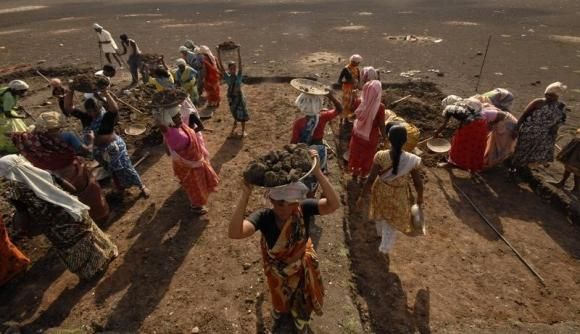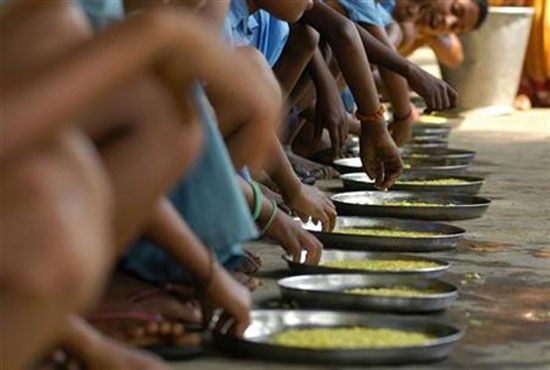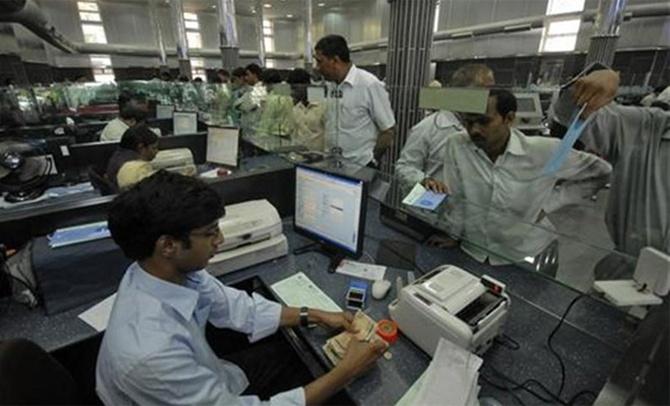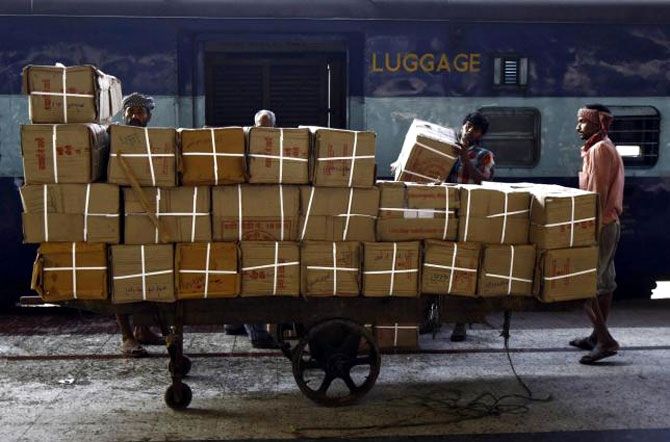NDA under Mr Modi is as focused on the rural poor with doles and hand-outs as the UPA under Dr Singh was, explains A K Bhattacharya.

Photograph: Reuters
If you need any proof of how the National Democratic Alliance (NDA) government under Narendra Modi has made no significant departures from the economic policies followed by the United Progressive Alliance (UPA) government under Manmohan Singh, a look at just last week’s developments should be sufficient.
In the last few days, there have been several instances where the similarities in approach between the two regimes have been in evidence in the sphere of economic policy making in particular.
Last Friday, for instance, the government presented to the Lok Sabha its supplementary demand for grants seeking parliamentary approval for spending an additional Rs 40,882 crore (Rs 408.82 billion) on a few programmes over and above what was provided when Finance Minister Arun Jaitley presented his Budget for 2015-16 last February.
The significance does not lie in the quantum of additional money sought to be spent by the government, but in the schemes for which such funds are being allocated.

What a quick analysis of these numbers shows is that over 28 per cent of the supplementary demand for grants will be directed towards just two schemes that the NDA government is implementing under the Mahatma Gandhi National Rural Employment Guarantee Act and the National Food Security Act.
Remember that both the schemes were introduced by the UPA government as part of its entitlement politics to confer on people the right to jobs and food.
Both the schemes, mandated under separate laws passed by Parliament, were controversial as they imposed huge costs on the exchequer apart from being poorly targeted and, therefore, posing dangers of large-scale diversions and leakages.
One would have imagined that after the NDA government was formed in May 2014, both the schemes would receive relatively less attention.

Since they were mandated under law, the Modi government obviously could not have completely starved them of funds, but it could have easily reduced financial allocations.
But none of that really happened. Financial allocation for both food security and guaranteed jobs for the rural poor were maintained by and large at the same level as in the previous year.
And in the current year, the funds for the two schemes were initially raised marginally and now – with the help of the supplementary grant – raised significantly by 20 per cent for the rural job scheme and by around seven per cent for the food security programme.
Indeed, last week’s supplementary demand for grants sought additional outlays for a few more social sector schemes like the Integrated Child Development Scheme (which was started by the Congress government headed by Indira Gandhi in 1975) and the Pradhan Mantri Gram Sadak Yojana (which was launched by Atal Bihari Vajpayee’s government in 2000).
Taken together, the additional allocations for these four schemes accounted for about 40 per cent of the total supplementary demand for grants of Rs 40,822 crore.

What does this expenditure pattern show? NDA under Mr Modi is as focused on the rural poor with doles and hand-outs as the UPA under Dr Singh was.
Take a look at the NDA government’s other policy initiatives, the similarities in its approach with that of the UPA appear even more striking. The UPA introduced the Aadhar scheme, a biometric identification programme.
The NDA government has now expanded its scope to use it for transfer of not just subsidies on cooking gas, but also a host of other cash benefits.
The UPA believed only in recapitalisation of weak public sector banks without bringing about fundamental reforms in their ownership or governance systems.

So far the NDA is seen to be busy allocating only fresh equity for weak public sector banks. It is talking about governance change, but there is still no talk about reducing the government’s equity in them below 51 per cent.
With regard to the foreign investment policy also, the NDA government is largely following the pattern laid down by the UPA.
After overcoming much opposition to allowing foreign direct investment in multi-brand retail, the UPA government had introduced a regime in which foreign companies could invest up to 51 per cent in multi-brand retail companies provided the states where the stores were to be located also approved their proposal.
The NDA was opposed to this policy when it was introduced in 2012, but more than a year after the formation of its government at the Centre, the same policy is being followed and indeed some further relaxations are being considered.
Yes, there are major differences between the NDA and the UPA on contentious issues like the land acquisition and rehabilitation law or the introduction of the goods and services tax or GST.

But as recent developments show, the NDA government appears to have veered round to accepting the main provisions of the land acquisition as they existed in the law that was passed by the UPA in 2013.
And on GST, the differences are primarily with regard to some technical issues of what items are to be included or whether the one per cent additional tax needs to be imposed by producing states.

The fact is both the parties are in principle in agreement on the need to have a GST regime that both believe would facilitate trade and economic activity with gains for everybody.
One might see in these similarities a reassuring trend that in spite of their differences on social policies, there is a broad consensus between them on the nature of economic policies that need to be pursued.
This has ensured a degree of predictability and consistency in economic policies over the last many years, even though questions on whether the two are any different from each other keep surfacing from time to time - and much to their discomfort.











